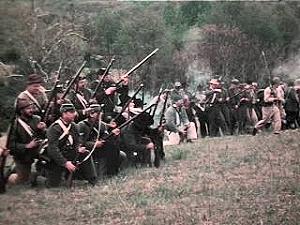

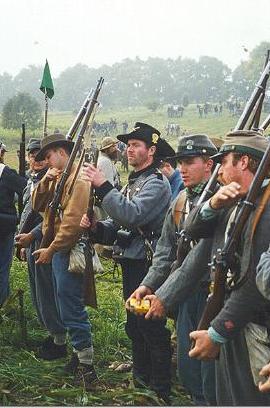
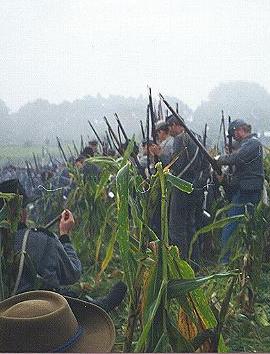
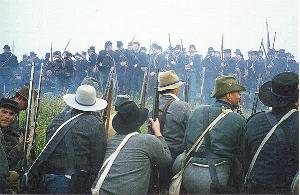
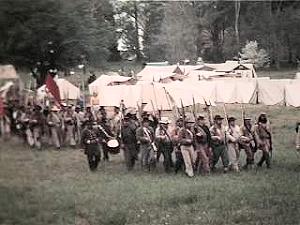
Historical Unit
The 1st Kentucky Infantry Regiment was formed by the merger of two Kentucky infantry battalions led by Blanton Duncan and Thomas H. Taylor. This regiment consisted of eleven (11) companies numbering some 800 men; mustered in Kentucky.
Both battalions arrived in Virginia just before the Battle of First Manassas.
Duncan's battalion arrived at Harper's Ferry on May 4, 1861. Taylor's
battalion arrived in early July.
Interestingly, both battalions were involved in train wrecks while en route to the Eastern front. The wrecks were at two different locations:
Duncan's while enroute to Manassas and Taylor's while it
was enroute to Manassas Junction to merge with the former.
Colonel Taylor was given command of the regiment by direction of the Secretary
of War for the Confederate States on August 7, 1861.
Throughout the summer and early fall of 1861, the 1st Kentucky operated in the
Northern Virginia area. In early December, General Gustavus W. Smith presented
the Kentuckians with their first battle flag.
On December 20th, 1861, the 1st Kentucky along with 3 other Confederate regiments,
a battery of artillery, and 250 cavalry, commanded by J.E.B. Stuart engaged federal forces at Dranesville, Virginia.
The small battle lasted some 3 hours and at last
the outnumbered confederates were forced to withdraw.
On Christmas Day the regiment went into winter quarters
approximately two miles west of Centerville, Virginia. The winter
proved to be long and cold. The conditions were made worse by daily skirmishes
with federal pickets.
The primary area of operation ranged from Frying Pan
Road to Chatilly, Virginia.
On March 8, 1862, the confederate army commenced a grand retreat through Warrenton,
Culpepper Court House, and Orange Court House; a distance of
some 70 miles. It remained at the latter for a period of
3 weeks.
During this time, Colonel Taylor was appointed Provost Marshall and 200 men
of the regiment under Captain Joe Desha were detailed as guards.
Major Crossland was given temporary command of the regiment.
After 3 weeks, the regiment moved to Richmond and on April 14 was ordered to Yorktown. It was here the Kentuckians encountered
the heaviest fighting of the regiment's history.
On April 16,
the regiment repulsed two federal assaults while under cannonading and small arms fire.
The army withdrew from Yorktown and the 1st Kentucky was ordered to
Winder Camp in Richmond. Its 12 months enlistment having expired, the regiment
was mustered out of service on May 13th and 14th.
The war was far from over and the former 1st Kentucky members enlisted in the Kentucky units operationg in Tennessee as well as other various military organizations in Virginia.









